Common Core State Standards number 5 and number 7 within the Reading Informational Text strand state the teaching of each informational text feature and its function. With this in mind, I knew that I needed a way to teach non-fiction text features in an engaging, fun and meaningful way.
I decided to use a detective theme and my third graders turned into detectives of text features. My job, as Chief of Detectives, was to create several different “missions” that each text detective must investigate. The missions were centered around specific text features (photographs and captions, headings and subtitles, charts/tables/graphs, special type of print, glossary, index, table of contents), their purpose, and how to use them to understand the text.
Mission One: Introducing the different text features
As the Head of Detectives, the first lesson I taught was an overview of the different text features. My little detectives used informational text features name tags (smaller version of the posters) as a reference throughout the unit. I gave a brief overview of each feature by reading a short non-fiction text, pointing out an example of each one of the text features.

Mission Two: Informational text and literature Venn diagram
Once my text detectives had an understanding of the different features, the text detectives then created a Venn diagram with hula hoops.
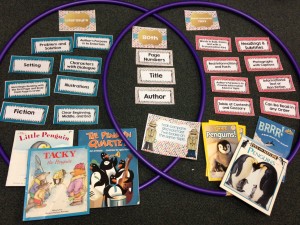
The mission was to compare and contrast two books on the same topic (one literature, one informational text).
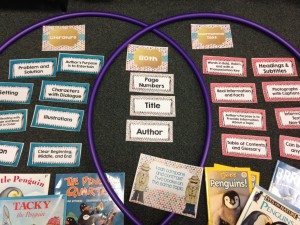
The students then wrote the features literature and informational text on their own copy of the Venn diagram.
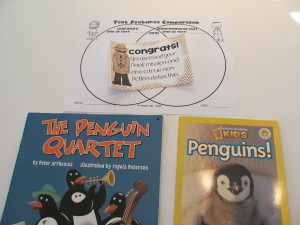
Mission Three: Purpose of text features anchor chart-
Mission three had the text detectives identifying each text feature and its purpose. Common Core State Standards number 5 and number 7 within the Reading Informational Text strand state the teaching of each text feature and its function.

We matched up the text feature in the pink cards to the purpose of the text features on the blue card. We first did this as a whole class, then my students worked with a partner to recreate the chart during reading partnerships.
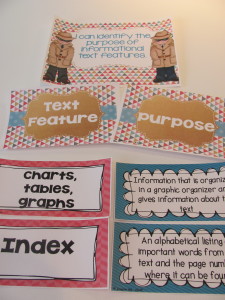
Mission Four: Text features flip book
Text detectives are assigned a very important mission- identify text features in their own books they are reading with their reading partner, during independent reading, or even during guided reading groups.
I do not introduce this mission in any old fashion. When my little detectives were at music, I put this Mission Possible envelope on their desk. As they entered the classroom, I played the Mission Impossible theme song to get them pumped.
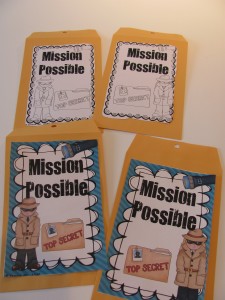
When the detectives open their envelope, they read what their next mission is about. For an extra element of fun, I have each student stamp their fingerprint on their flip book, which states they accept the mission.
Throughout the next few days, the detectives search for the features we learned about and then write about them in their flip book. They must cite evidence in the text that proves they identified the each text feature.

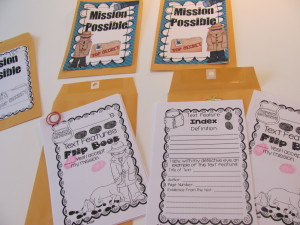
Once the detectives find examples of each text feature in their own books, the Chief of Detectives passes out the “private detective of text features” badge.
Mission Five: “I Spy With My Private Eye…”
The Chief of Detectives loves this interactive lesson as much as my little detectives. After sending a note home kindly asking for sticky note donations, we are ready to use sticky notes to track down the different text features.
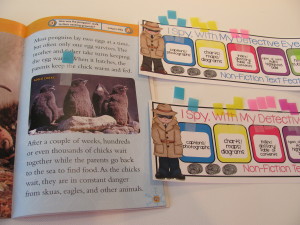
When students are reading an informational text, they track down the text features we learned. Each color sticky note represents a different text feature.
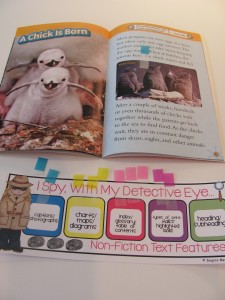
Although I use this strategy during guided reading groups, I especially love to use these sticky notes when we are reading a new lesson in our science or social studies text book.

Other missions are listed below:
Mission Six: Text Features Bingo cards– This one is just for fun :) My text detectives enjoy a fun game of Bingo, all while reinforcing the important vocabulary words from the unit.
Mission Seven: Create an information book– Text detectives will apply what they learned about each text feature to create their very own, one-of-a-kind information book. This serves as an end of unit project and an authentic way to integrate the text features in their own way.
All of the ideas presented above can be found in my new file, I Spy Informational Text Features. Click HERE or on the image below:
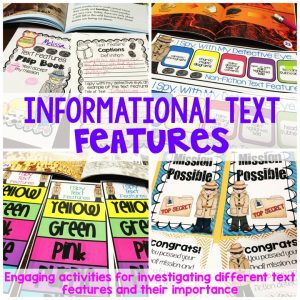

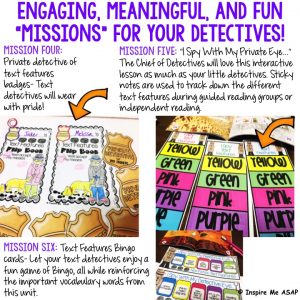
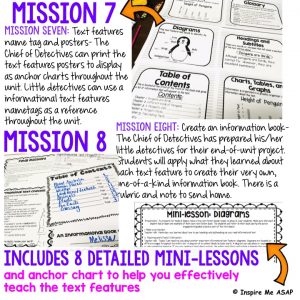
This file is also part of a Reading Workshop BUNDLE:
Save 10% by purchasing directly through my website.

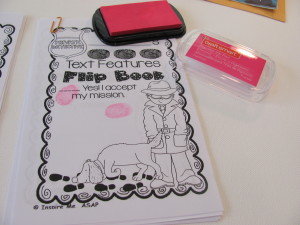
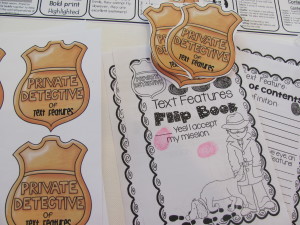
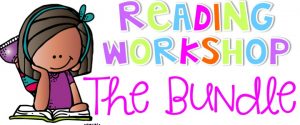




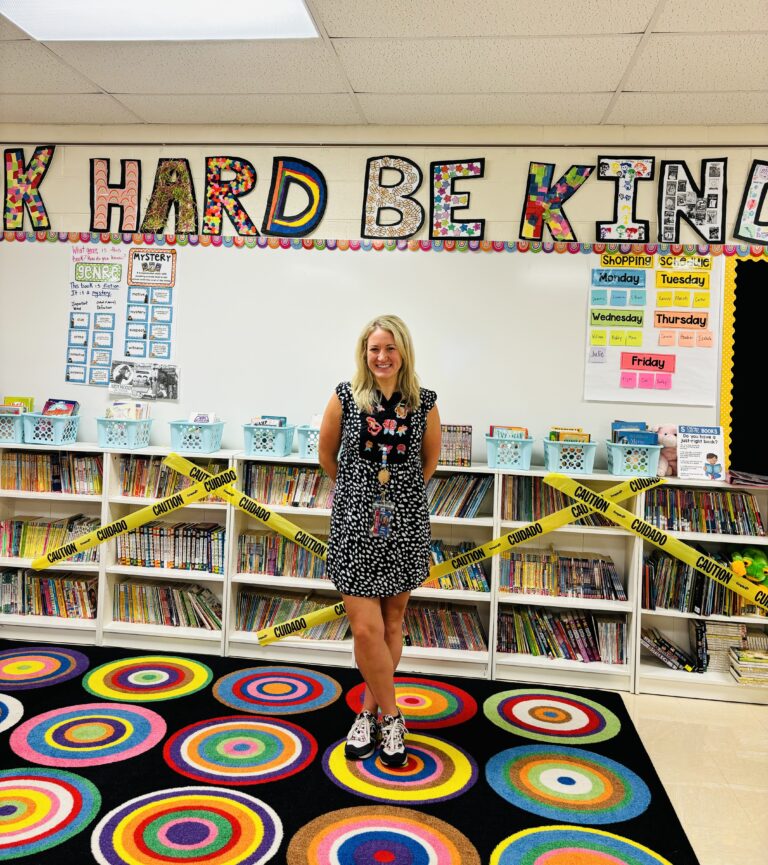



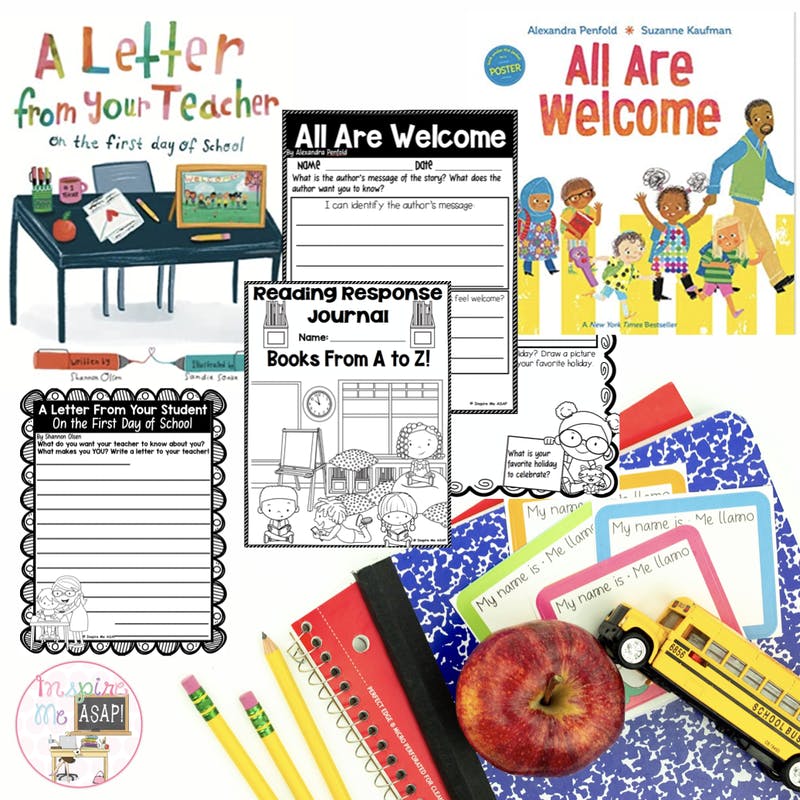
4 Responses
What an awesome text features set. I think my fourth graders would love it!!!
I would love to win this file- it looks awesome!! : )
DRAT!!! One short!!1 Thanks for sharing =)
This is absolutely amazing! jenm9032@gmail.com